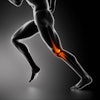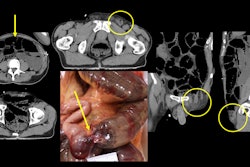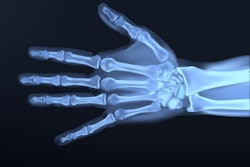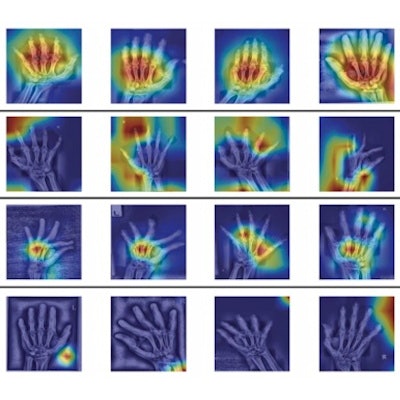
A group in Thailand has trained an AI model to identify sex from hand x-rays, a development they say can aid in forensic investigations to identify human remains, according to a study published August 9 in Forensic Science International: Reports.
"By automating the sex estimation process using CNNs [convolutional neural networks], forensic analysis can benefit from enhanced accuracy and objectivity, enabling faster and more reliable sex assessment," wrote Pawaree Nonthasaen, PhD, of Chulabhorn Royal Academy in Lak Si, Bangkok, and colleagues.
The researchers noted that Thailand was greatly impacted by a severe tsunami in 2004. The repercussions of the disaster were staggering, with 5,395 deaths, 8,457 injuries, and 2,991 people reported missing, they wrote.
"In instances where natural disasters or catastrophic incidents result in a considerable number of fatalities, the need for identification of human remains becomes critical," the group wrote.
Previous studies have trained CNN models on large datasets comprising tens of thousands of hand x-rays and have achieved sex estimation accuracies of up to 79.6%, according to the authors. However, these studies primarily focused on hand radiographs from the RSNA, with limited representation of other populations. Given known variations in bone anatomy across different populations, it becomes crucial to investigate sex estimation using CNNs within specific populations, they wrote.
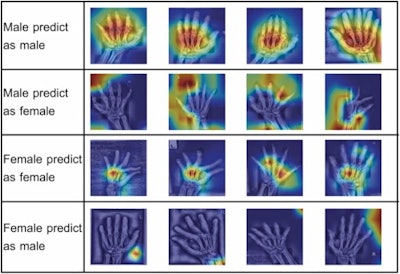 Grad-CAM visualizations for estimates from InceptionResNetV2 for estimating sex from hand x-rays. Image courtesy of Forensic Science International: Reports through CC BY 4.0.
Grad-CAM visualizations for estimates from InceptionResNetV2 for estimating sex from hand x-rays. Image courtesy of Forensic Science International: Reports through CC BY 4.0.To that end, the group for the first time aimed to employ a CNN for sex estimation from Thai hand x-rays. They used images from 385 men and 788 women and split them into training, validation, and test sets. Among seven CNN models evaluated on 100 unseen male and female x-rays each, a model that employed InceptionResNetV2 architecture demonstrated superior performance. The model achieved an accuracy of 87% and an F1-Score (precision and recall) of 87%.
In addition, the group sought to understand the strategy behind the CNN's estimates by applying a Grad-CAM visualization technique. The visualization results indicated that the model correctly identified x-rays of male hands by focusing on the second to fifth metacarpal bone (typically larger and longer in men) and the second to fifth proximal phalanges. When estimating radiographs of female hands, the model primarily emphasized the second metacarpal bone.
"However, it should be noted that the model can sometimes focus on parts of an image that may not carry any meaningful information for the task at hand," the researchers noted.
Nonetheless, the study represents an important first step, with future research planned to build upon these findings to further contribute to advancements in forensic analysis, they wrote.
"Our findings provide a solid foundation for sex estimation from Thai hand radiographs, highlighting the power of CNNs in mitigating challenges associated with data quantity and quality," the group concluded.
The full article can be found here.

